Advertisement
If you have a new account but are having problems posting or verifying your account, please email us on hello@boards.ie for help. Thanks :)
Hello all! Please ensure that you are posting a new thread or question in the appropriate forum. The Feedback forum is overwhelmed with questions that are having to be moved elsewhere. If you need help to verify your account contact hello@boards.ie
Refractor or Schmidt-Cassegrain scope?
-
14-09-2020 12:43pm#1Hello Guys,
I am new member and absolutely beginner amateur astrophotographer. So far I have used Nikon P900 to do my first catch ups on Jupiter and Saturn. I have improved a bit but I don't think so I can do much more on it.
imgur.com/uc3ztqz this one is from yesterday, stacked from avi with AutoStakker 3 and a bit adjusted.
Now I am preparing to buy my first scope and more I read or watch, more I feel lost.
I have watched tons of tutorials and howtos on YT (for example AstroBackyard or AstroBiscuit). I think I am on point to decide between refractor or Schmidt-Cassegrain build. I know 1st one will be more suitable for DSO, 2nd for planets (I don't want to give up on planets, but I want to have an option to take photos of nebulas and galaxies as well).
I am not sure I should go with DSLR or something like ZWO ASI 290. DSLR like D60 or D1000 seems to be more universal but I know there could be some issues to catch prime focus, but it is possible to solve it with additional barlow lens or reducer/corrector afaik. But this is secondary problem at the moment.
I think like for begging 6-8 inches Celestron AVX or 72-80 refractor SkyWatcher EvoStar ED probably will be something worth of consider but a price with whole accessories is still high. Maybe bigger but cheaper StarTravel 120mm?
To simplify (or make things even more complicated, not sure) what will disappoint me more? Planets on 72-80 refractors or DSO on 6-8 inches Celestrons AVX? And what if I will go with budget StarTravel series and cheaper goto mount?
Initially I thought about 9 1/4 Celestron or 100mm-120mm SkyWatcher EvoStar ED but it will be definitely too expensive, especially with goto mount and I think too "advanced" for beginner.
I look to find something suitable for me. Best possible balance between planets and DSO astrophotography equipment in lowest possible price with minimum impact on quality. Sound like something that doesn't exist I know
If I would know that 72-80 mm refractors EvoStar ED series or save money on 120mm StarTravel can give me decent planets photos (in case of StarTravel decent DSO as well as I am not even sure how big difference is between it and Evo) I think I would go this way as it seems to be less complicated and better for DSO photography, which is giving more space to explore. But as I said, I don't want to give up on planets at this point.
After I will make decision between this two constructions and find an answer it is worth paying more between 6 and 8 inches or between 120mm StarTravel and 80-100mms EVOs I will start think about cam and goto mount which will handle eventual upgrade in future.
Sorry for language and looong, probably complicated post but any advices of experienced users are more than welcome.
ps. If it wasn't complicated enough an option which I consider as well is refractor for DSO and some second hand, cheap, oldie Newtonian for planets
Regards,
Raf0
Comments
-
What sort of budget do you have in mind?
Refractor and Cassegrain will be expensive for DSO. Any cassegrain is a mixture of both Refraction and Reflector and would be the best of both worlds.
Your light pollution level will a big factor here also.0 -
Hey, thanks for your reply.
Currently I am very close to pick Sky-Watcher Evostar 80ED DS-Pro & HEQ5 PRO mount. It is already a bit too expensive for me and I will need to spend another 500 euros on 2nd hand DSLR plus other accessories (light pollution filter included).
My location as per light pollution map:
SQM 18.67 mag./arc sec2
Brightness 3.69 mcd/m2
Artif. bright. 3520 μcd/m2
Ratio 20.6
Bortle class 7
Elevation 51 meters0 -
Well still not sure what your budget is.... but you don't necessarily need the pro version of that mount. Might be worth looking at the EQ5 deluxe and motor driver(s) only RA is needed to track. Plus because of short exposures (<30sec) it would not have to be bang on accurate. Once aligned properly to Polaris the motors will track objects sufficiently, you can upgrade later to the pro version which would cost an extra €30 maybe 40-50.
You'd be manually framing an object also so you will be learning where things are located in the sky instead of automatically finding objects which in my opinion spoils the fun.0 -
Hey, I haven't fixed budget on this. I have considered also Sky-Watcher Evostar 72ED DS-Pro OTA on Sky-Watcher Star Adventurer Pro Pack mount which only give me an option to follow with Earth rotation and will be about 1/2 of price of setup from my previous post.
Thing is it won't give me a lot of place for eventual future expands. I totally agree with your point that goto mount could take away a lot of fun which come with manual set ups, that's why I have considered also Dubsonians. But I have to admit I'm not 20 no more so it could give me more pain and frustration with blurry images than fun. So that's why I have gave up on this idea.0 -
Hey, I haven't fixed budget on this. I have considered also Sky-Watcher Evostar 72ED DS-Pro OTA on Sky-Watcher Star Adventurer Pro Pack mount which only give me an option to follow with Earth rotation and will be about 1/2 of price of setup from my previous post.
Thing is it won't give me a lot of place for eventual future expands. I totally agree with your point that goto mount could take away a lot of fun which come with manual set ups, that's why I have considered also Dubsonians. But I have to admit I'm not 20 no more so it could give me more pain and frustration with blurry images than fun. So that's why I have gave up on this idea.
There's a an Newtonian especially made for imaging Sky-Watcher Quattro f4 8" it would be one of the best currently on the market as far as Newtonians are concerned anyway and fairly affordable. Comes in a 10" also. Add a field flattener and or coma correcter to this and it is an amazing setup. Even the skywatcher Explorer 130P to 250P would compete here.
An EQ3 mount would definitely do the job for the 72/80 ED' will definitely be compatible with 130p maybe up to 200p, perhaps all the way up to the 250p/quattro but would strectch it. 5kg payload.0 -
Advertisement
-
Thank you for all your advices. I will review it shortly as I haven't made decision yet.
Cheers!
Edit: my first question is, if price of this Newtonian is almost equal of price Sky-Watcher Evostar 80ED DS-Pro, which probably will give me better quality dso pictures, why I should consider Newtonian, which is actually huge and needs to be maintained? Maybe it would be better for planetary observations, even maybe to take photos of planets, but other things like dso photography or even size advantage and lack of maintenance definitely goes to refractor.
Please note I am amateur and I could be wrong.0 -
Thank you for all your advices. I will review it shortly as I haven't made decision yet.
Cheers!
Edit: my first question is, if price of this Newtonian is almost equal of price Sky-Watcher Evostar 80ED DS-Pro, which probably will give me better quality dso pictures, why I should consider Newtonian, which is actually huge and needs to be maintained? Maybe it would be better for planetary observations, even maybe to take photos of planets, but other things like dso photography or even size advantage and lack of maintenance definitely goes to refractor.
Please note I am amateur and I could be wrong.
Hands down the better scope here is an 8" or greater Newtonian! The smaller aperture of the 72/80 can't even compete with it. The only next best thing to it would be a €2k cassesgrain. Sure it is big but are you buying it to look cool or actually get to see and or image DSO's and Planets. What might not be good about it is the field of view if you only want wide field then go with the 80. Smaller objects like the dumbbell nebula should fit nicely in the Newtonian but each to their own they have their limitations.
Not too sure what you mean by maintained, give it a collimation every now and again, look after it and it will last your lifetime.0 -
If wanting DSO astrophotography, the correct advice to give is a small ED or APO refractor, on a good mount. Many others have gone through the trials and tribulations involved, and the overwhelming advice is a short focal length refractor on a good mount. The image scale will be sufficient to get pretty decent pics without being crucified with *needing* sub-arcsecond-level of guiding. Stacking minute-long exposures will get really good results for the effort put in. Going longer or wider will require much more effort to get good results, and only really becomes possible with decent levels of experience.
An SCT will not be a good starter scope for DSO astrophotography, the focal length is far too long for moderately expensive mounts. The focal ratio is also too high for decent exposure times for DSOs. It can be done, but will be incredibly frustrating for the effort put in. Same effort and cash outlay into a decent small refractor will give much more impressive results much more easily.
A Newt will work well for the experienced, but will absolutely need a coma corrector for flat field wide field, at an F/ratio usable for DSO pics. The newt structure will also *have* to be rigid in order to work well - my Quattro 8" f3.9 newt is almost stiff enough on my AVX for 2 min subs, but the mount is at its limit with that mass onboard. Only windless nights too, the size of the Newt tube will act as a sail for vibration and movement, and would lead to many a ruined sub.
The AVX is not a good match for SCT deep sky photography. Yes, it *can* be done, but it will be frustrating. I own an AVX, and I've done a bit of work (polar alignment perfected, permanent periodic correction averaged and applied, and I'm still about 5 sec P-P) to it to improve it as much as is really possible, but the most time and cost effective way to improve the AVX is to get a CGX instead.
The nice thing about getting a properly good mount to start with is that it removes a lot of the pain points that plague the newbie astrophotographer. Guiding becomes a nice-to-have and not an absolute-must-work, wind gusts and other vibrations are much less of an issue.
Now, taking stacked video of the planets is another ballgame entirely, and the SCT is a very good choice for that, and the mount requirements are lessened. The Nikon is not a suitable camera for the job, Again, it can be wrangled into kind-of working, but it's far from closer to ideal. Use a decent camera like a Zwo ASI 224MC and take colour video, or get a monochrome camera in the same kind of pigeonhole, get a filter wheel, and get decent filters. Use software to automate the process and lessen the chances of screwup and frustration. Planetary work needs focal length, and needs a well-matched camera pixel size to the image scale to work well - calculators are available online for that. Pixels too big on the camera and the necessary focal length becomes unwieldy, too small and there's diffraction effects and not enough light.
The only way that an SCT would be useful for both planetary video capture and for DSO is to get the Hyperstar add on, but that is incredibly expensive and definitely not a recommendation for a relative newbie. Collimation is a bear with it to set up properly but the results are impressive once right.
There is no option that is good enough in all aspects to fit the brief. Either get a secondhand SCT and delve deeper into the planetary captures, or get a small apo and huge mount and start taking half-decent DSO pics. The seeing is rarely good enough in Ireland to make putting lots of cash into the planetary side a good prospect - ask me how I know.. Reasonable results can be obtained, but it'll always be an uphill battle. At least we have dark skies so that the few clear nights we get can be used to get spectacular images.0 -
@Popoutman thank you very much for your effort on replying me. I can see that you can understand my "newbie doubts" well. APO could be a perfect pick, but it is too expensive for me. That's why probably I will go with Sky-Watcher Evostar 80ED DS-Pro & HEQ5 PRO mount. I live in very light polluted area (Bortle class 7) so hopefully it won't ruin it. Problem is also availability of equipment in online stores at the moment. Usually you have an option to wait like 1-2 months for dispatch or overpay ~30% to get it faster.
As camera probably I will pick some 2nd hand D600 or D1000, remove R filter and maybe add fan. I will give up on reducer/flattener as it cost around half of scope price. Maybe I will add it later on. Light pollution filter is probably what I will need since beginning.
If you will find a moment I will appreciate any advices/opinions about my most recent plans.
Thank you all.0 -
My current setup is the HEQ5 Pro and the Evostar 80ED. I'm currently saving for a field flattener/reducer and a ZWO camera. I haven't had much chance to use it since I got it but I did get a rough image of the Andromeda Galaxy a while ago and you do need that wide field of view for DSO photography. The HEQ5 is probably a little overkill for the 80ED but I wanted some future proofing without spending over a grand on the mount. Well worth it. Especially if you get it hooked up to a laptop with EQMod.0
-
Advertisement
-
My current setup is the HEQ5 Pro and the Evostar 80ED. I'm currently saving for a field flattener/reducer and a ZWO camera. I haven't had much chance to use it since I got it but I did get a rough image of the Andromeda Galaxy a while ago and you do need that wide field of view for DSO photography. The HEQ5 is probably a little overkill for the 80ED but I wanted some future proofing without spending over a grand on the mount. Well worth it. Especially if you get it hooked up to a laptop with EQMod.
Hey Adyx,
I think the same regarding HEQ5. It should handle perfectly some, eventual, future upgrades.
Tracking. Probably I will try both. Built in and software one. I think I will start with polar alignment (a bit not sure how as I have very limited view to north sky because of buildings and trees) plus SynScan and a bit later I will buy adapter for stock finderscope plus ZWO ASI 120MM Mini USB 2.0 Mono Camera. Hopefully I will be able to catch focus on it and it will do the job.
In relation to field flattener/reducer I will skip it on beginning as well. It is almost half of scope price ;/ And as far as I know it is not rly mandatory. "You will get spherical aberration visible around the edges of any images, but this can be cropped out, until you have enough to add this." - this is what one seller has told me.
I have serious concerns related to the fact that I live in highly light polluted area (Bortel class 7). Hopefully it will make things just a little bit more difficult rather than impossible. So instead of flattener/reducer I will get some light pollution filter.
Regarding main camera probably I will pick 2nd hand DSLR Canon 6D as this one has full size CMOS sensor so after infra-red filter remove it should be more than ok. But in here I need to double check it will suit to fov.
edit: yes fov, look ok
If you can, please share with your pics.
Thanks for your reply. Cheers,
Raf0 -
Apologies, I was away all weekend, my pics at the moment aren't really worth posting. I've only had the Evostar a couple of weeks and the weather and a hand injury mean I've only had it out for about an hour.
I had the same thoughts on the flattener, the camera is my main priority. My camera at the moment is a very old Canon 500D which has seen better days.0 -
The 80ED is the standard textbook example of a good-enough scope for starting out with astrophotography. The HEQ5 is about the bare minimum needed to minimise the possibly epic levels of frustration that a lesser mount will cause in the learning process. A year or three getting used to that equipment combination will allow great pics with a little leeway in pointing and driving accuracy, and after that time you'll have a much better idea of what you want to delve deeper into.
There is no way to overmount for astrophotography (well not in any practical way at least). As long as it can be moved from the storage location to the observing location in relative ease, that's one of the things that's going to be important. The less hassle it is to start your observing sessions, the more often you'll be out, the more pics you'll be able to take, the more results you'll get for your input effort. Undermounting will mean more heavy reliance on no-wind, great polar alignment, more critical balancing of scope+mount+accessories. The heavier mounts just deal so much better than the lighter cheaper ones with everything.
This youtube channel is really good for the backyard astrophotographer - AstroBackyard: https://www.youtube.com/watch?v=WS_SpSSQUsA&ab_channel=AstroBackyard. That video is as good a starting point
Once I get the replacement tube for my 130mm TS Photoline apo, hopefully I'll get a start on some pretty pics too..0 -
@Popoutman thank you for your post.
In general two thing I worry about is light pollution and fact that probably I won't have good access to Polaris for proper polar alignment as my backyard is facing to south. There is workarounds byt seems to be less accurate.
As at the moment it is almost impossible to get heq5 pro and evo 80ed in Ireland at a reasonable price so I try to catch 2nd hand from uk as well, but it's hard because no one want to post it.
From time to time I have a doubt, maybe I should start from SWSA plus some smaller refractor like evo 72 ed or at least proper lens? It could give also advantage of mobility but from the second hand I know heq5 pro is something rock solid and if I will properly look after it, it should work for for yeeeaaarsss.
Regarding yt channels I have watched most of the content made by AstroBackyard, AstroBiscuit, Nebula Photos, Peter Zelinka, AstroFarsography etc. At the beginning all the thing are simply amazing, after while it is still, but you start to feel that you should catch some practice as well and just watching became a bit frustrating xD
Good luck with your tube replacement!
Cheers,
Raf0 -
Light pollution filters can get good results in light polluted areas, but they're expensive roughly €100 - €200+ depending on the type (clip in / 1.25" / 2"), travelling out to darker skies of course you would not depend on LPF's. In general unless you're in the middle of the city or bortle +6 you could get away with LPF's but they don't cure light pollution merely improve things. Polaris shouldn't be an issue unless your back garden is 10 foot long. I'm SW facing myself and can see Polaris 10 feet or so away from the house.0
-
I have checked and Polaris is pretty well accessible. I might need extension tube for mount, otherwise my rig will be placed in the middle of my backyard, on grass. It could causa issue with cables length.
I have bought already SW Evo 80ED and Canon 6D. Still hunting on 2nd hand HEQ5 Pro. After I will get mount I will think what else I need. For sure full frame LPF, probably ZWO ASI 120MM Mini USB 2.0 Mono Camera, M48 ring, camera rotator ring, Bhatinov mask and cables (for sure I have forgot about something).
I haven't seen nowhere 10m EQDIR, longest are 5m. There will be a lot of cabling to plug everything comfortable to desktop in living room but still I am finding somehow this idea better than laptop outside in plastic container like most of ppl do. As this is just theory so I might as well be wrong on it.
I have also Sky-Watcher .85x Reducer/Flattener (it comes with my scope) but I don't think I will need it with full frame DSLR. Ahhh. Another expense. Remove of infra red filter from it. In case of older Canons it was a way simpler so you could do it on your own, while 6D is a bit more complicated and... expensive. We will see.0 -
I have checked and Polaris is pretty well accessible. I might need extension tube for mount, otherwise my rig will be placed in the middle of my backyard, on grass. It could causa issue with cables length.
I have bought already SW Evo 80ED and Canon 6D. Still hunting on 2nd hand HEQ5 Pro. After I will get mount I will think what else I need. For sure full frame LPF, probably ZWO ASI 120MM Mini USB 2.0 Mono Camera, M48 ring, camera rotator ring, Bhatinov mask and cables (for sure I have forgot about something).
I haven't seen nowhere 10m EQDIR, longest are 5m. There will be a lot of cabling to plug everything comfortable to desktop in living room but still I am finding somehow this idea better than laptop outside in plastic container like most of ppl do. As this is just theory so I might as well be wrong on it.
I have also Sky-Watcher .85x Reducer/Flattener (it comes with my scope) but I don't think I will need it with full frame DSLR. Ahhh. Another expense. Remove of infra red filter from it. In case of older Canons it was a way simpler so you could do it on your own, while 6D is a bit more complicated and... expensive. We will see.
For the Bhatinov mask you could make one of these fairly easily with cardboard and a craft knife or Stanley blade. They can be used for creative purposes such as elongating a star but they are mostly used as a focusing aid, the focuser on the 80ed is fairly smooth so just focusing on a bright star may be enough to get it to its most roundest. They definitely help though, easier to see if long lines are centered rather than if a tiny circle is actually a circle. If you wanted to elongate a star it could be done within Gimp or whatever program also.0 -
I have stuck a bit on cabling. So as I have mentioned my pc is located in living room and I have balcony doors only to backyard which actually must be closed, otherwise because of cold my wife will ask me to take my rig and move out

My idea like for now is to buy 2 x 10m AC adapter extension cords (one will go to mount, 2nd to usb hub, those cables are pretty tiny, something - something like this) plus 10m usb cable to usb hub.
Standard power extension cord cable is too thick so for sure I won't be able to put it through balcony doors and close it. Another advantage of this idea is that 220v plugs will be connected indoor what is safer.
I still have feeling this solution isn't perfect. Maybe there is any usb 3.0 hub which doesn't need ac adapter so I will need place only 2 long cables? But from other had I want also to add dew heater straps soon which definitely needs charging.
Any better ideas? External battery placed in backgarden attic is also solution but a bit expensive.0 -
There will be a limit on the length of a USB cable, you would need a special hub or Ethernet cable that is able to boost the signal. USB 2.0 is like 5m USB 3.0 has about a 3m threshold after that speeds start to drop off.0
-
Actually I have sorted out problem with power as I have checked and I will be able close balcony doors even when standard, thick extension cord cable go through, what is great.
So now I have new problem with usb cable length Thanks for highlighting this. Do you think that standard usb hub on ac/dc adapter will handle it? 0
Thanks for highlighting this. Do you think that standard usb hub on ac/dc adapter will handle it? 0 -
Advertisement
-
-
Hello Guys,
Please find out my first attempts on TGON, Pleiades, Horsehead nebula and Andromeda (ok this is actually 3rd or 4th attempt on M31, isn't an easy one on highly light polluted sky). I know those photos are far away from decent but I am still happy with it as a beginner Next one will be better. Thanks to everybody who helped me in here to pick up my firs gear!
Next one will be better. Thanks to everybody who helped me in here to pick up my firs gear!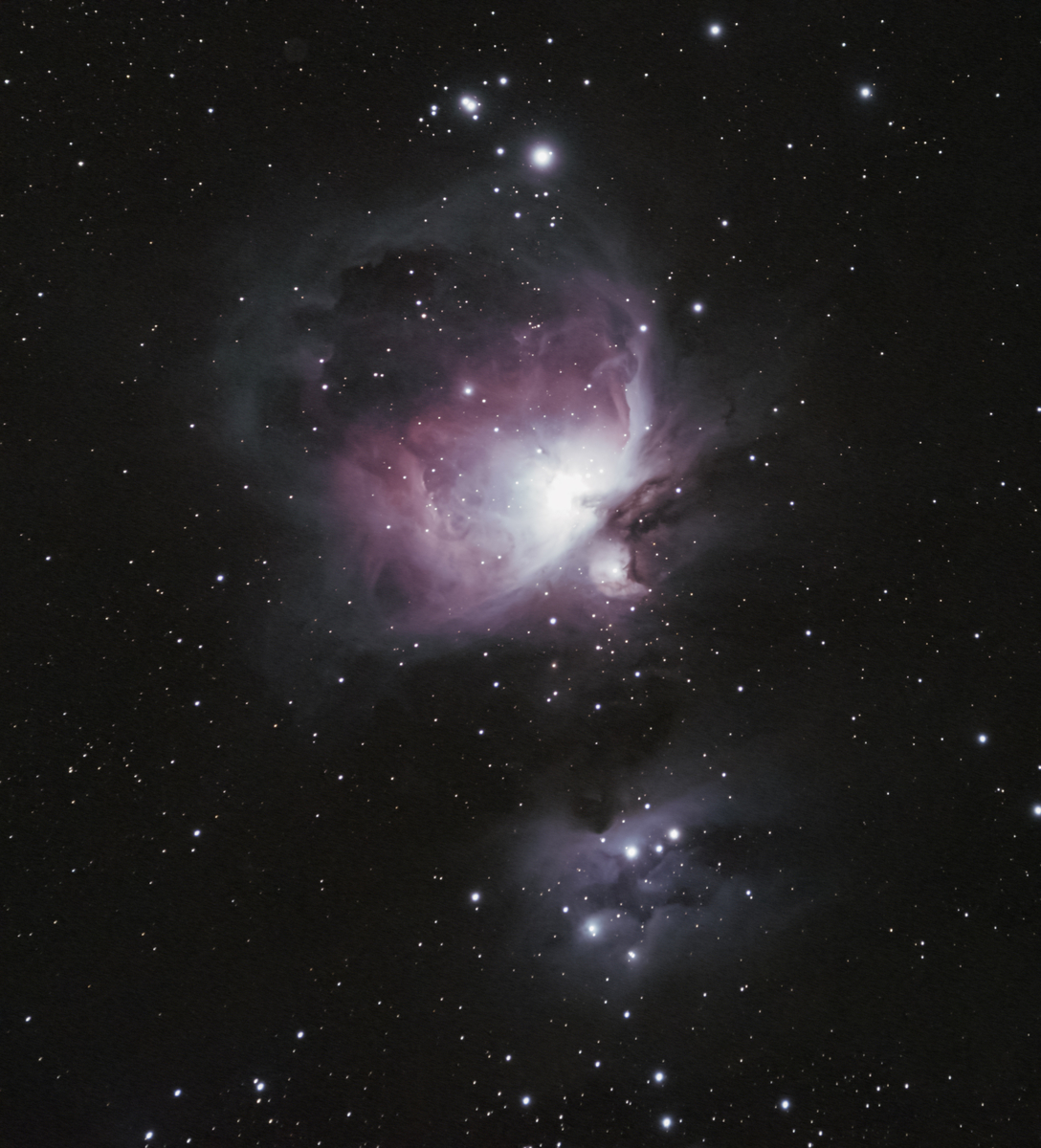
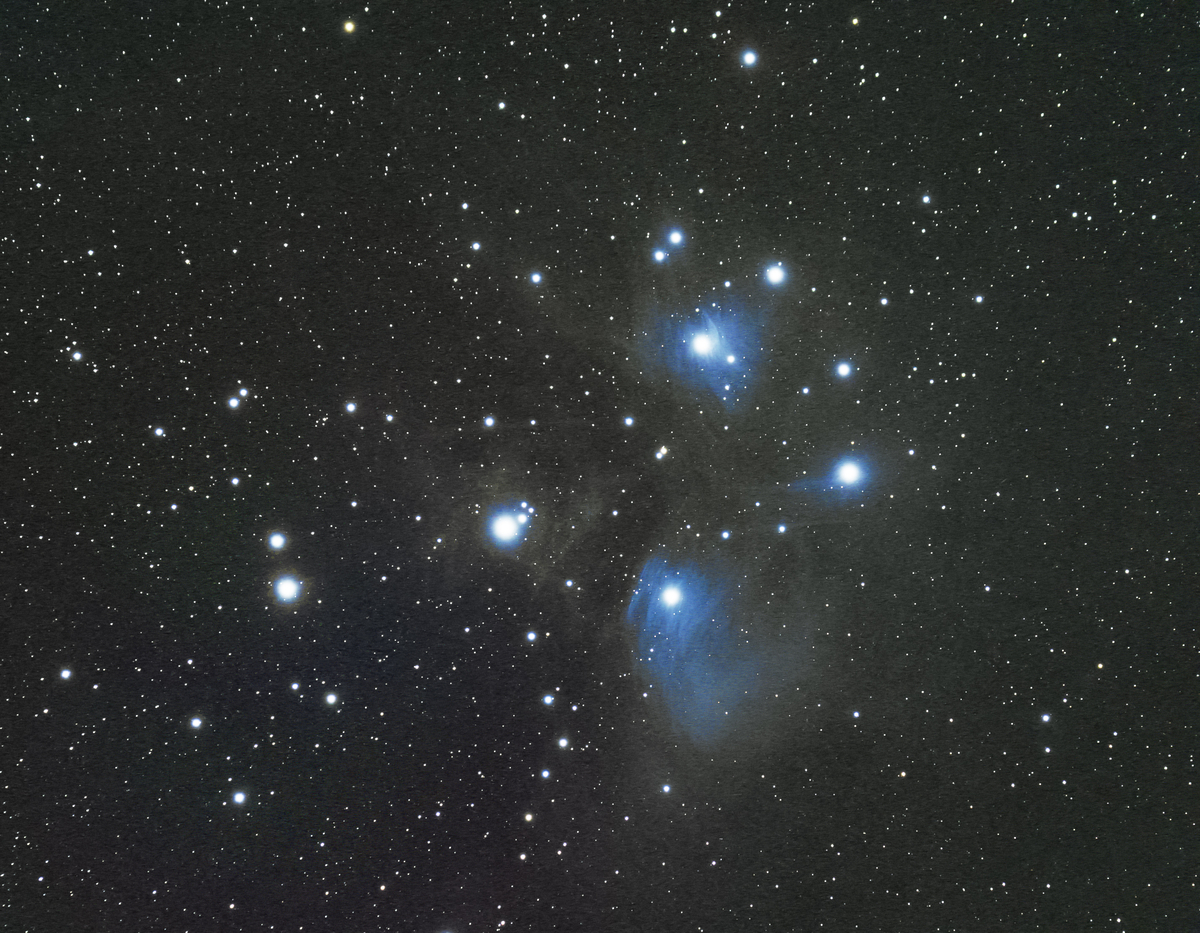
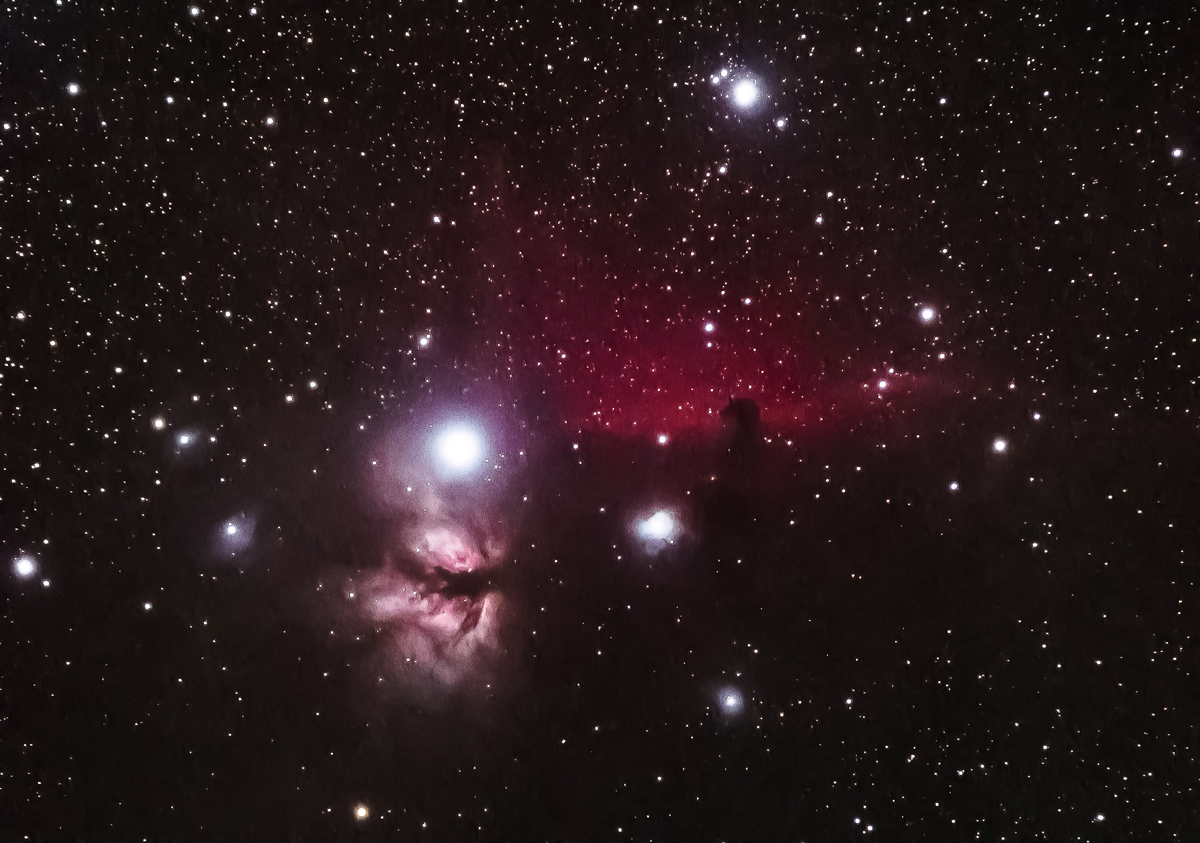
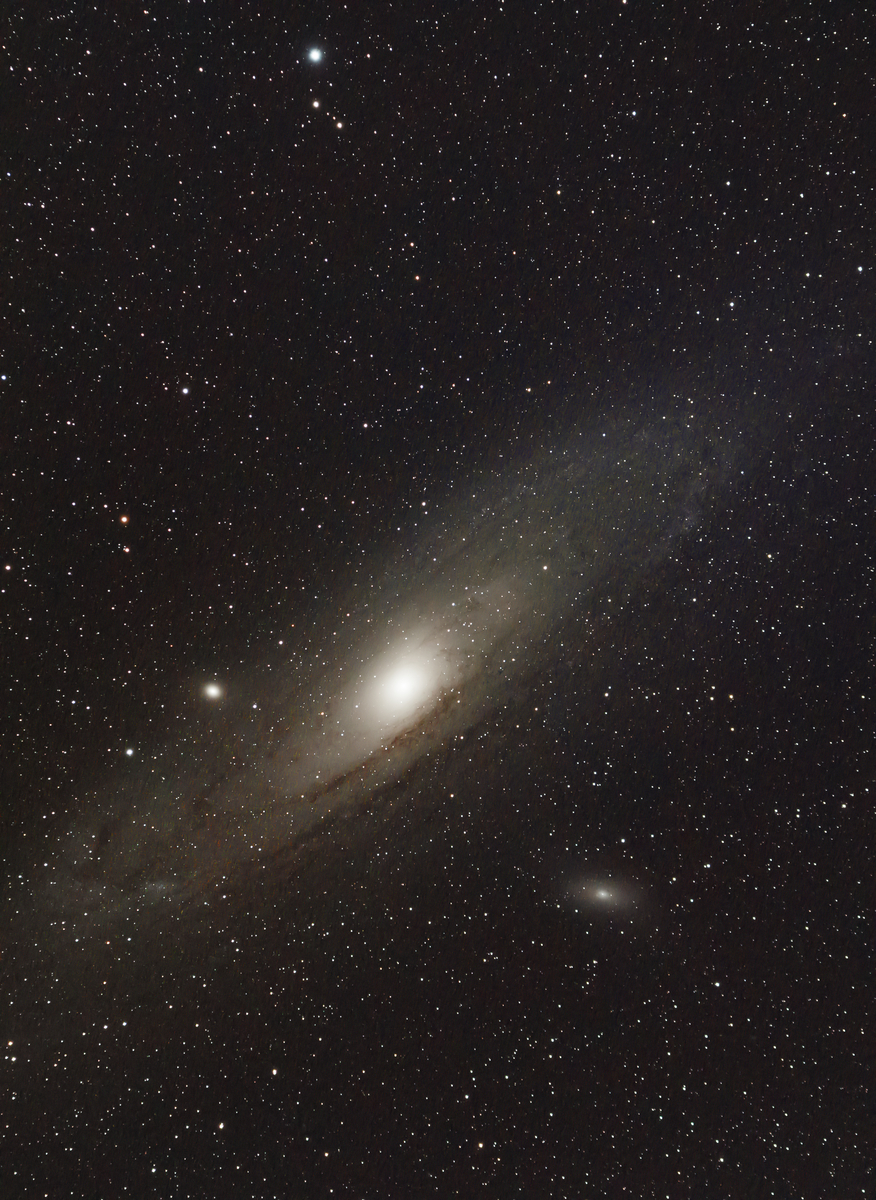
Cheers,
Raf0 -
...and 1st attempt on Rosette. Happy Christmas/Holidays!
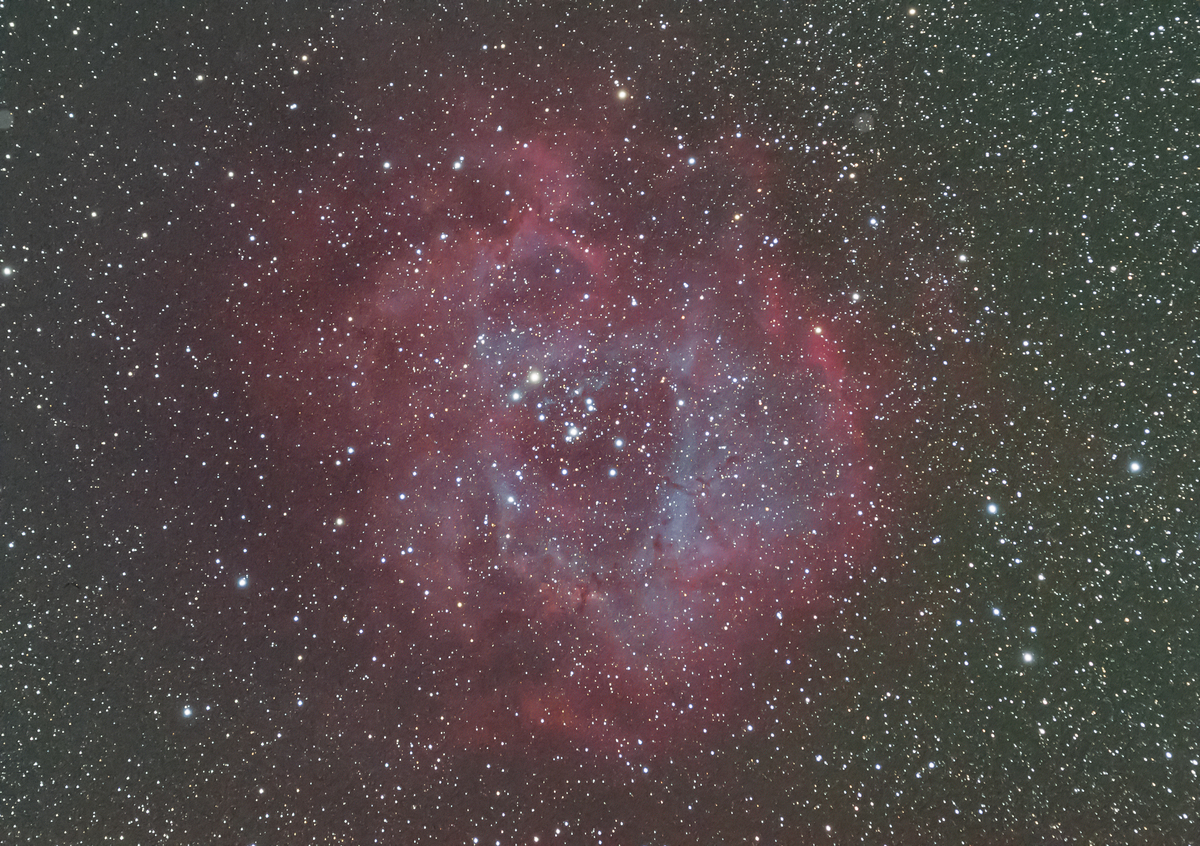 0
0 -
Nice jobs. Better than anything I'm doing at the moment!0
Advertisement
